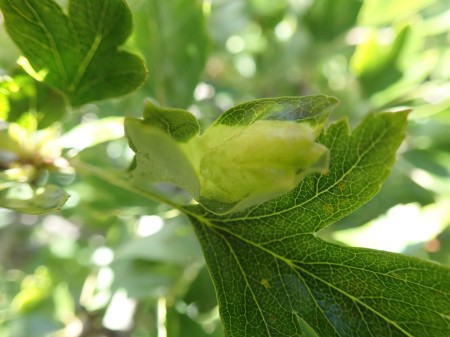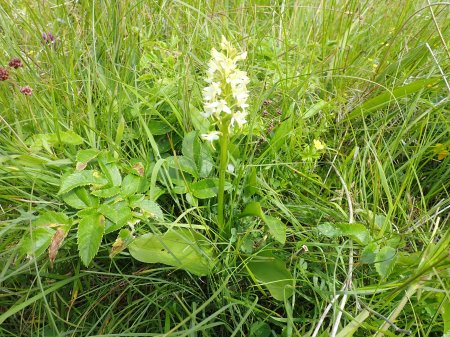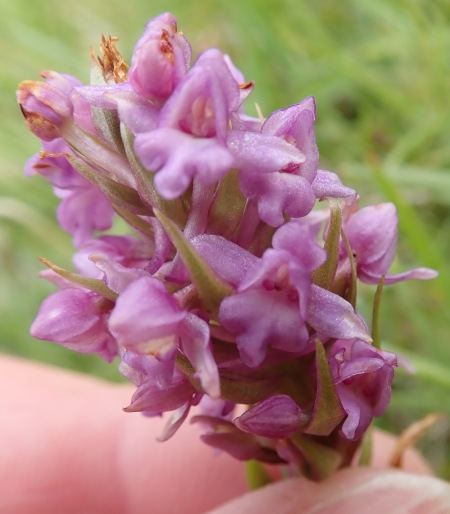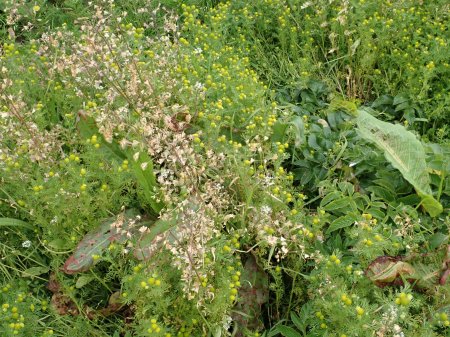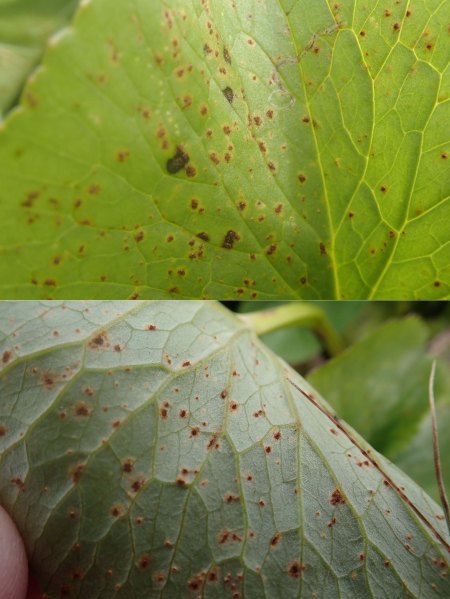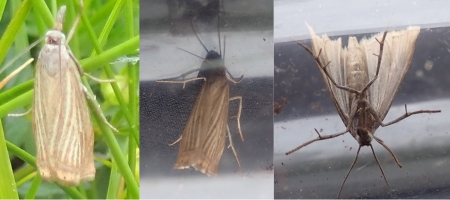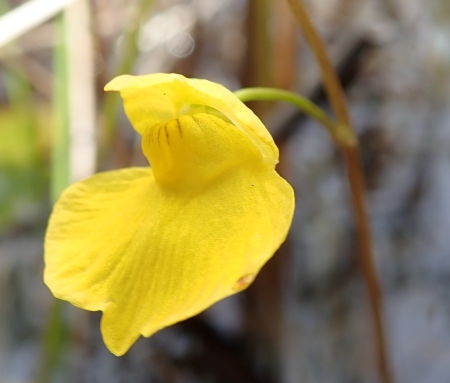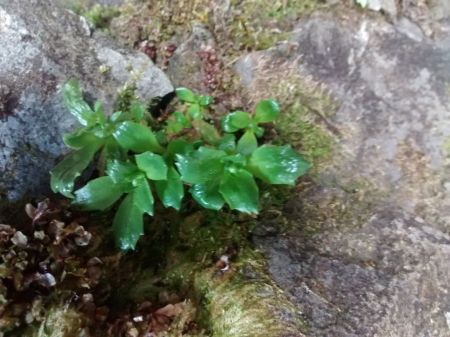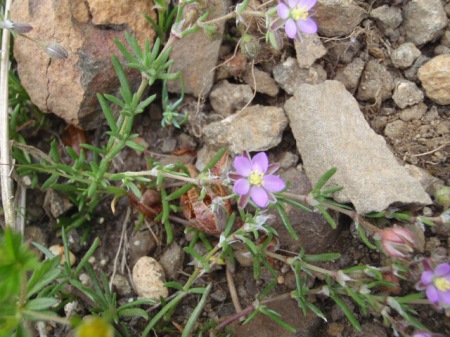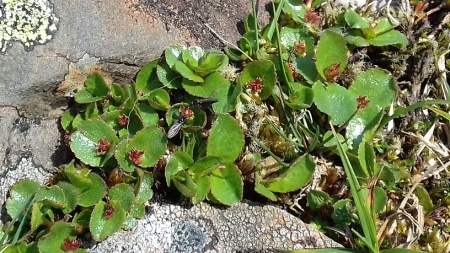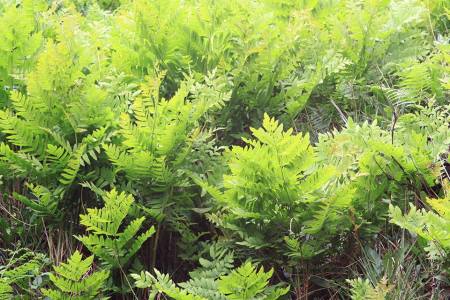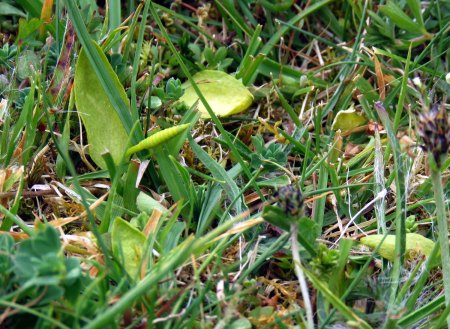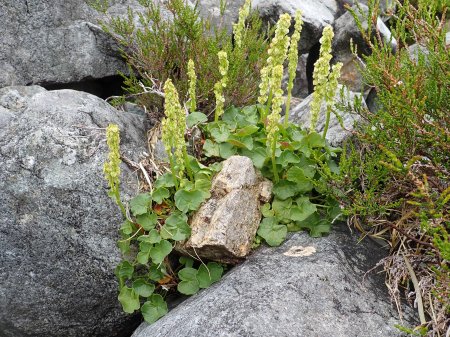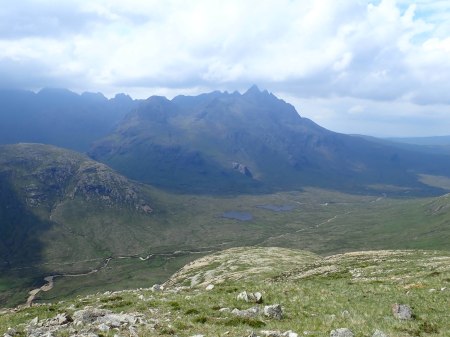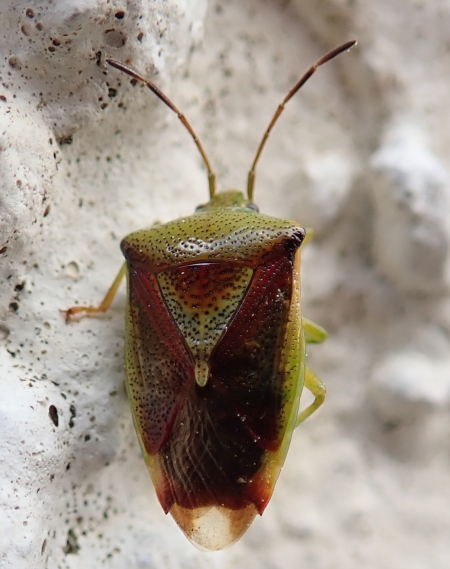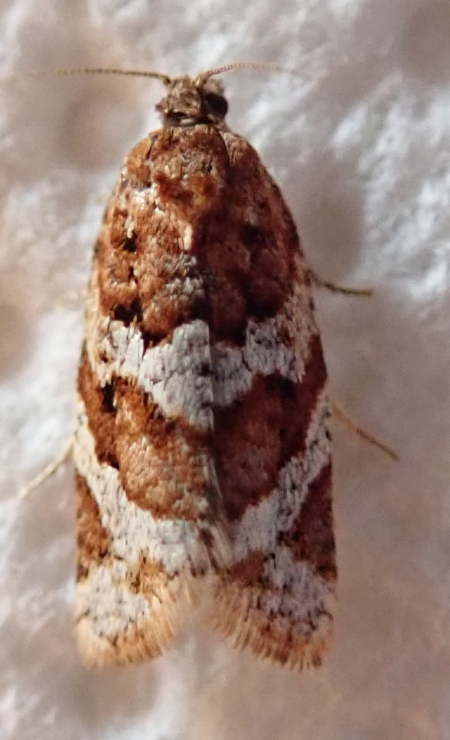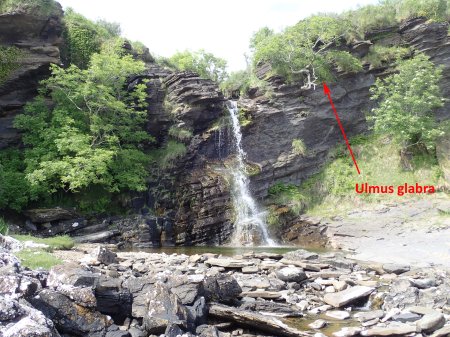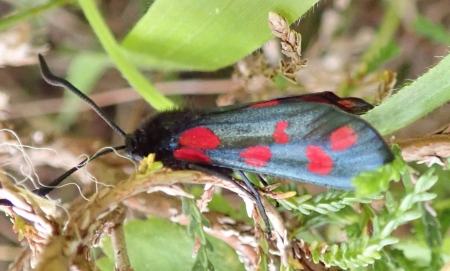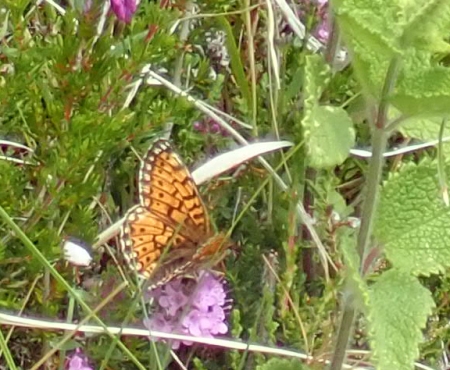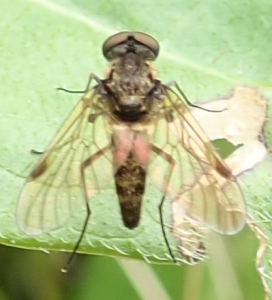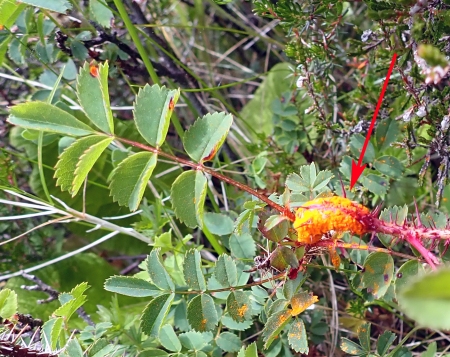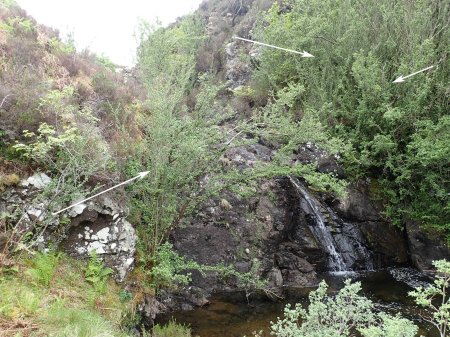Yesterday Skye Botany Group went to Soay hoping to re-find some plants not recorded there – or indeed anywhere in NG41 – since before 2000.
We added three plants new to NG41: Carex extensa (Long-bracted Sedge), Cotoneaster integrifolius (Entire-leaved Cotoneaster) and Ribes rubrum (Red Currant), the last two being garden escapes, but the first is welcome – if a bit of a surprise that it had not been recorded before.
We also saw four that had not been recorded in NG41 since before 2000: Carex oederi (Small-fruited Yellow-sedge), Carex leporina (Oval Sedge), Elytrigia repens (Common Couch) and Rosa mollis (Soft Downy-rose) – probably – see below.
In tetrad NG42L, which we visited briefly we recorded 69 taxa of which two were new. In tetrad NG42M, where we were for most of the day we recorded 143 taxa of which 30 were new. This was already the Soay tetrad with most taxa recorded.
We checked up on the Cladium mariscus (Great Fen-sedge) which was thriving in Loch Doire an Lochain.
We found a rose that leaves me a bit uncertain. It is mostly OK for Rosa mollis (Soft Downy-rose) but some hips devoid of glandular hairs worry me a bit – and there was a hint of apple scent about the crushed leaves – though they are supposed to smell resinous.
Nick spent a very hot day exploring the south-west of Soay in a tetrad with no previous bryophyte records and found 81 species. He recorded some vascular plants on the way, adding Hymenophyllum wilsonii (Wilson’s Filmy-fern) to tetrad NG41G and Eleogiton fluitans (Floating Club-rush) to NG41L.
I was pleased to find the Bumblebee Fly or Giant Tachinid Fly (Tachina grossa) again just a week after seeing it on Colonsay.
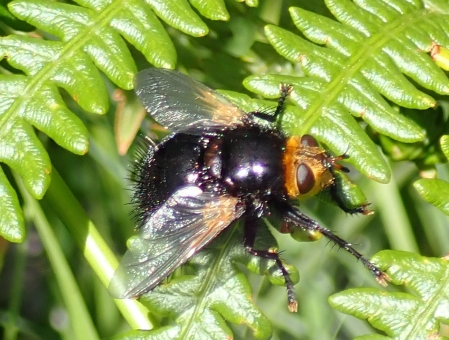
Tachina grossa on Soay
It appears to be new to Skye (if Soay counts as Skye) according to NBN. Later: Neil tells me he saw one in Drumfearn in 2014 but it doesn’t seem to have hit the NBN.
We all liked the look of this Deerfly – Chrysops relictus – but beware, it bites.
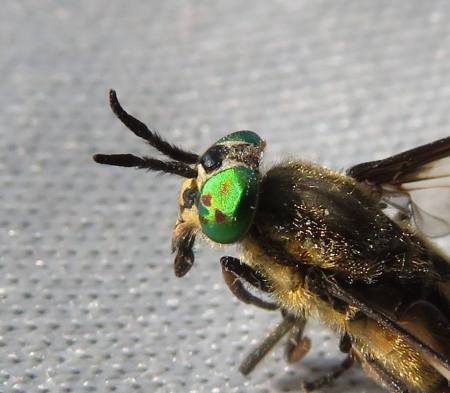
Chrysops relictus Photo: Neil Roberts
Seth has written this visit up from a different perspective -see here.
